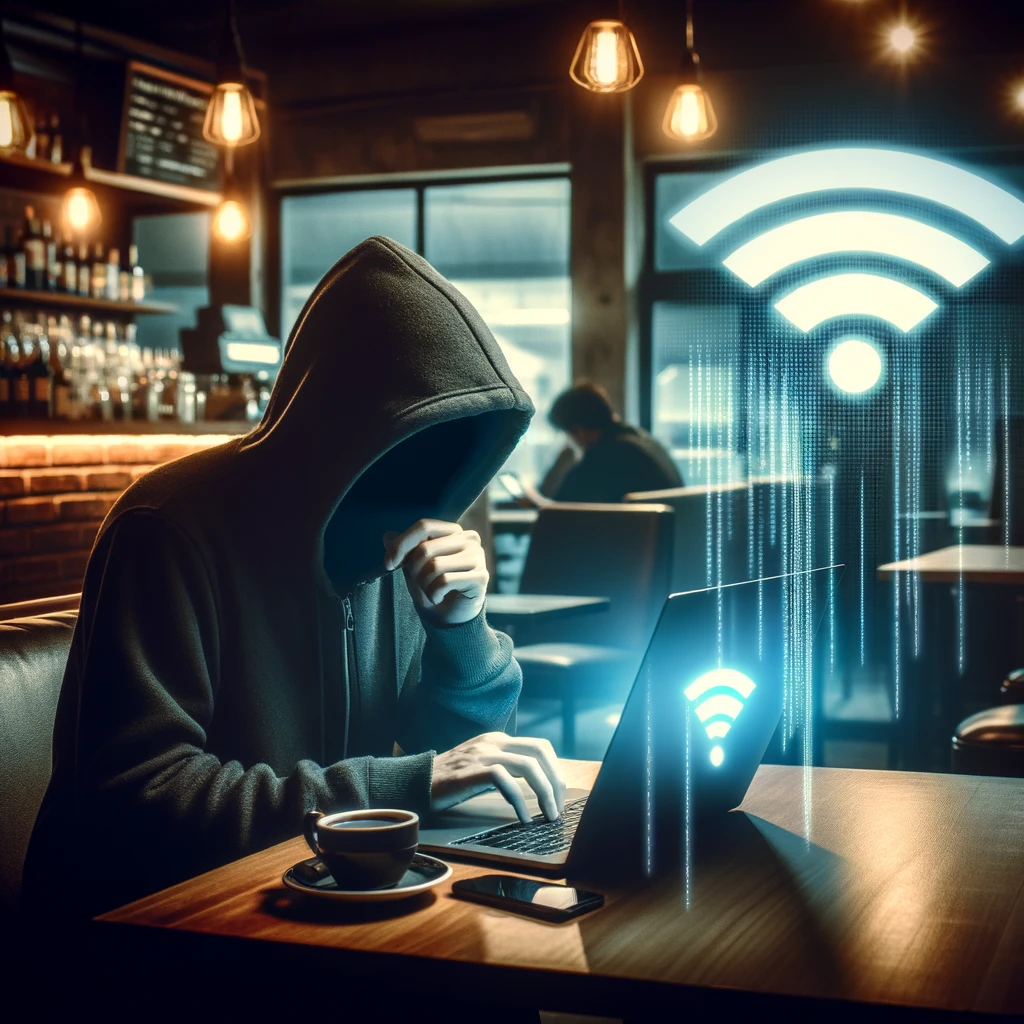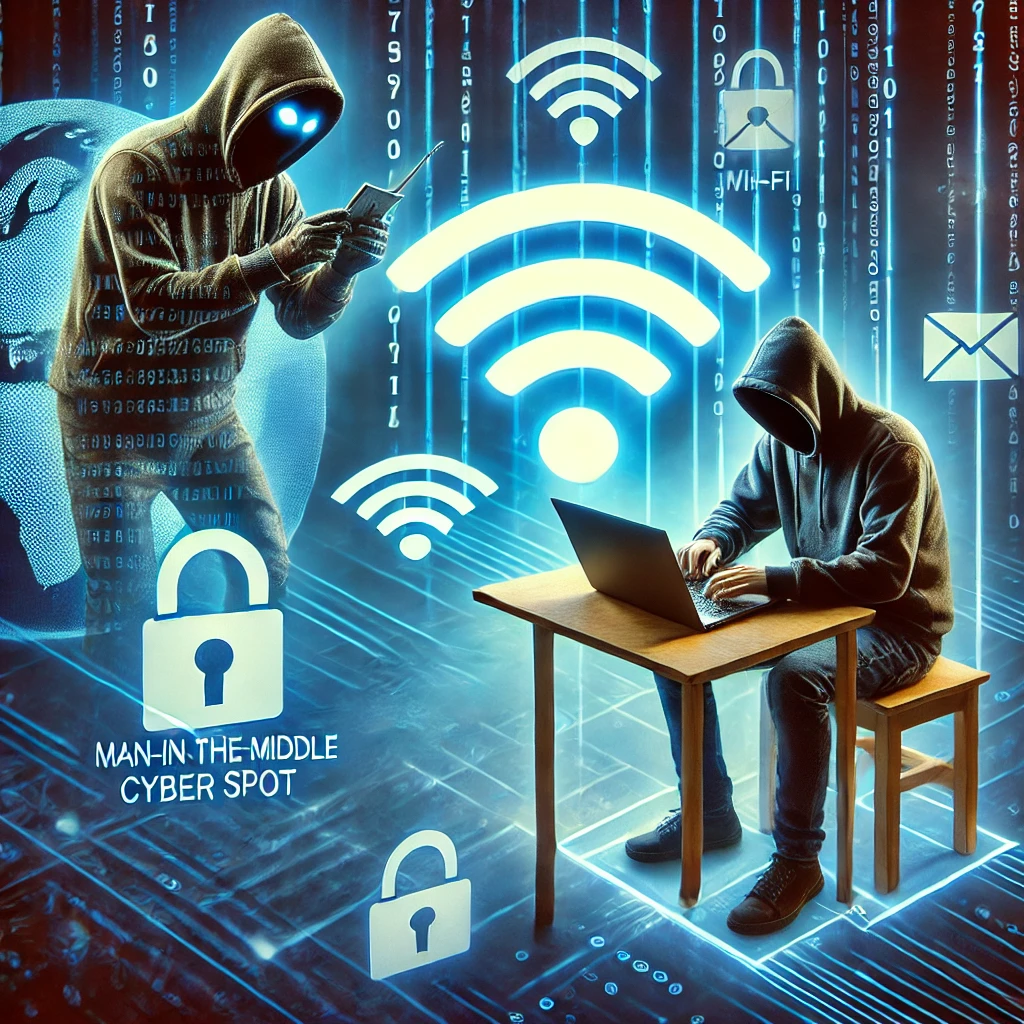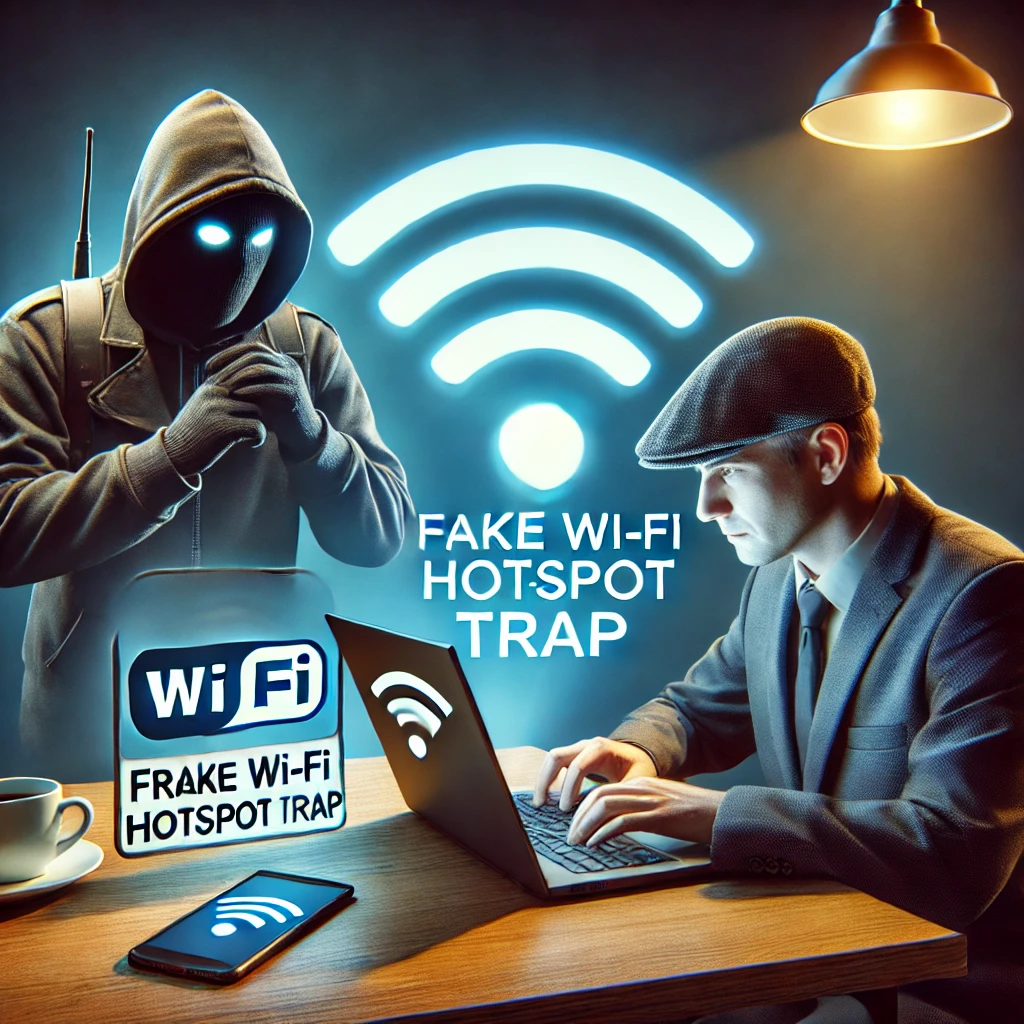



Public Wi-Fi is everywhere—coffee shops, airports, hotels, libraries, and even transit stations. While it’s convenient, it's also a hacker’s playground. Cybercriminals can easily intercept your data, steal passwords, and compromise your accounts. Understanding these risks and how to protect yourself is crucial to staying safe online.
Public Wi-Fi networks are often unencrypted, meaning anyone with basic hacking skills can see what you’re doing online. Here are some of the most common attacks:
A hacker can position themselves between you and the Wi-Fi network, intercepting your data without you even realizing it. This allows them to steal passwords, financial details, and personal information.

A hacker can set up a fake Wi-Fi network with a name similar to the real one. When you connect, all your internet traffic passes through their system, exposing everything you do online.
Hackers use software to capture unencrypted data sent over the network. If you're logging into accounts without HTTPS or using unsecured apps, your credentials could be stolen.
A VPN encrypts your internet traffic, making it unreadable to hackers. This is the best way to stay safe on public Wi-Fi, especially when accessing sensitive information.

Never log into banking, email, or other critical accounts while using public Wi-Fi. If necessary, use your phone’s mobile data instead.
Many devices automatically connect to known networks. This could inadvertently link you to a malicious hotspot. Disable auto-connect in your device settings.
Ask an employee for the official network name and login details. Avoid connecting to networks named “Free Public Wi-Fi” or other generic names.
Even if a hacker steals your password, they won’t be able to access your accounts without a second factor, such as a code sent to your phone.
Public Wi-Fi is convenient, but it comes with serious risks. Hackers can easily intercept your data, steal passwords, and gain access to personal accounts. By using a VPN, avoiding sensitive transactions, and staying alert, you can protect yourself from cyber threats while on the go. Stay safe and secure online!
Need assistance? Contact Us